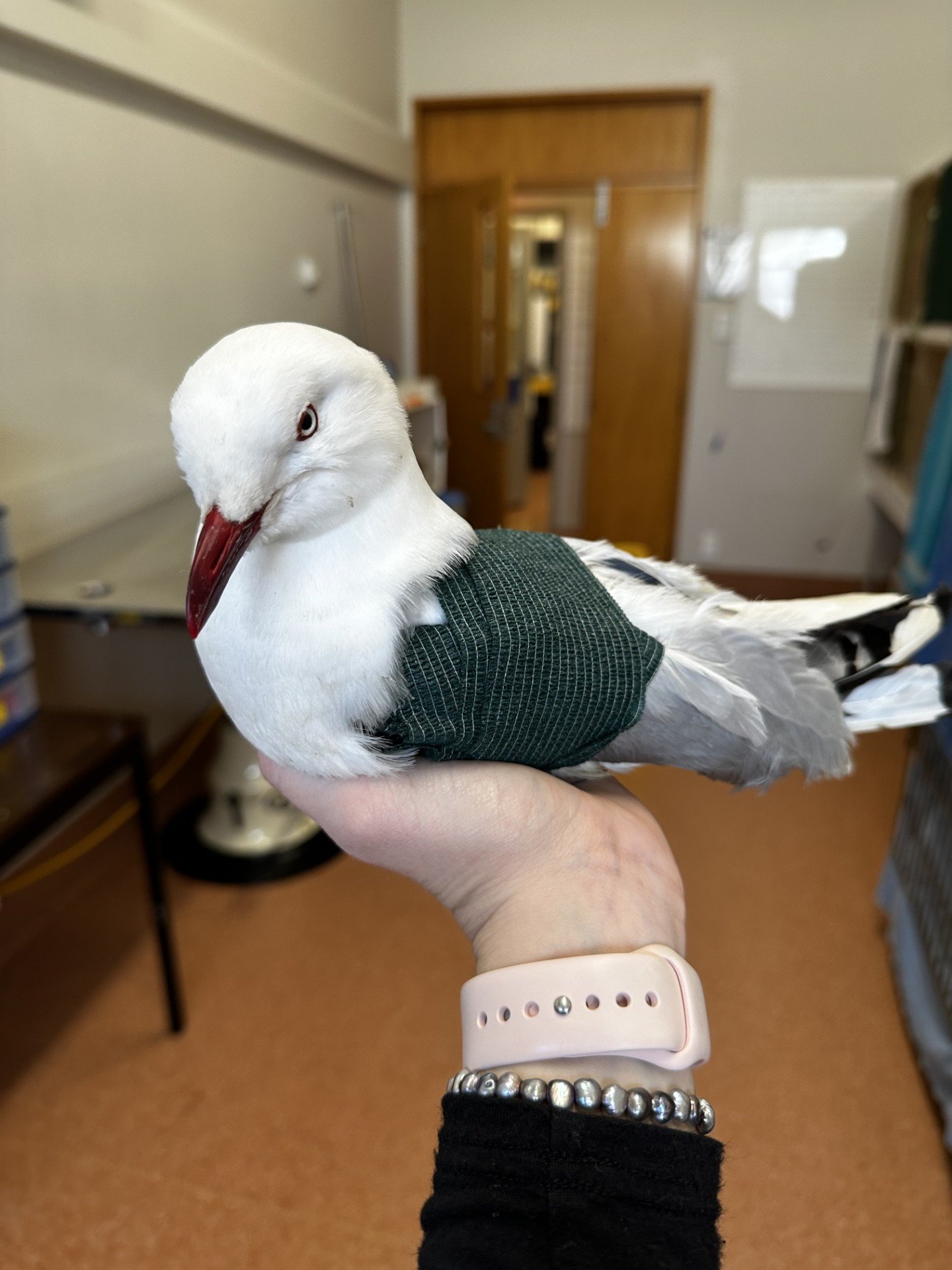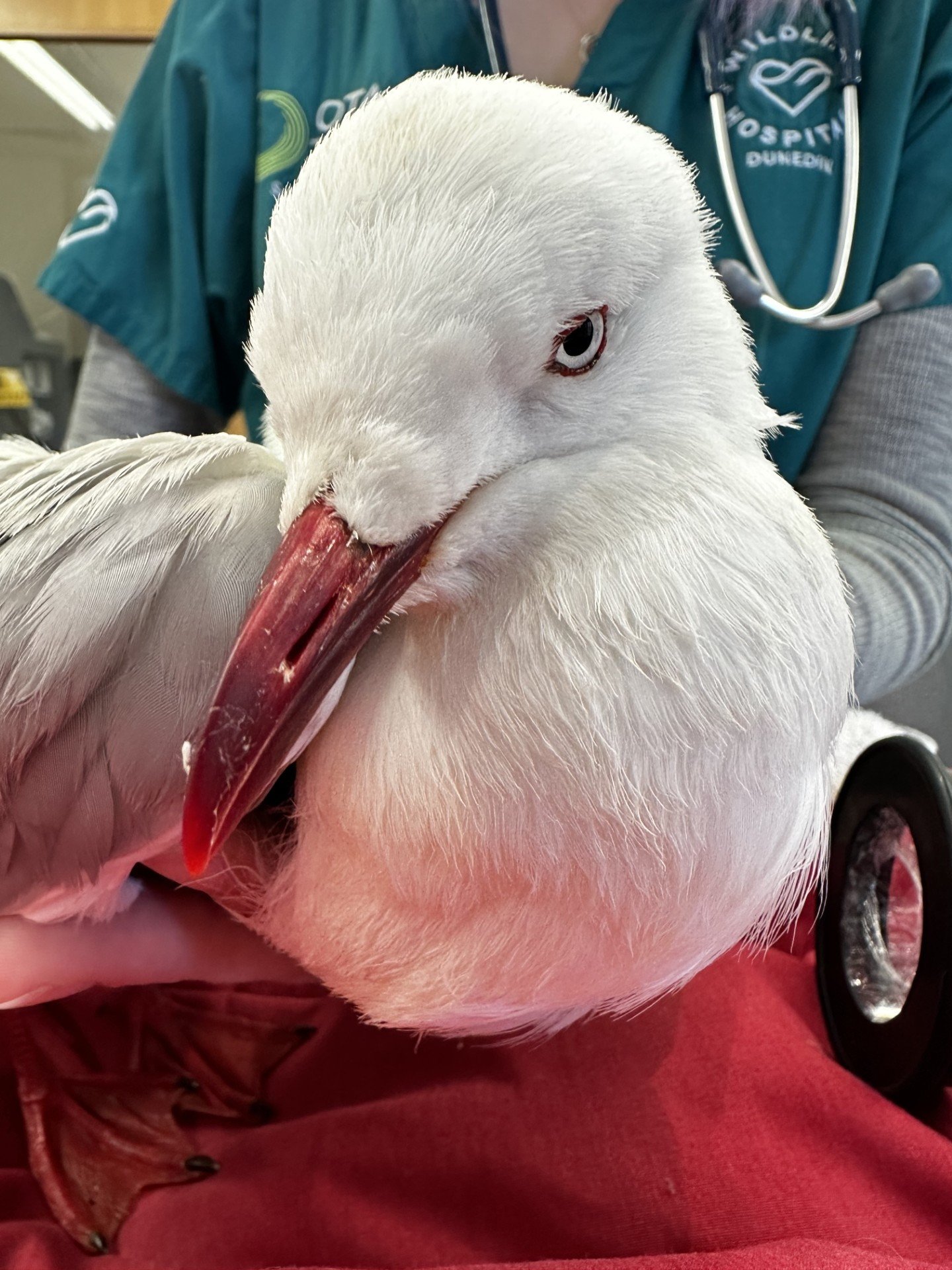
Wildlife hospital manager Jordana Whyte said the project would be a longer-term effort to place colourful numbered bands around the legs of the 100-plus red-billed gulls treated at the wildlife hospital each year and ask the public to report sightings of their movements around the city.
"We know they are surprisingly mobile, so it would be great to be able to measure that and to keep track of their survival rates after their release from hospital," she said.
The Dunedin Wildlife Hospital is also announcing that it will be campaigning for red-billed gulls/tarapunga in the 2025 "Bird of the Year" competition run by Forest & Bird, usually in September-October.
"We want everyone to know how cool and interesting they are."
The wildlife hospital team had been horrified and saddened by the recent attack on a red-billed gull by two people outside a fish and chip shop in North East Valley, which left the bird with a broken leg, a crushed rib cage and internal bleeding, Ms Whyte said.
The attack happened only days after Dunedin man Carl Alan Michelle was sentenced for bashing a gull to death and decapitating it in the Octagon because he believed it had tried to eat his food when he was intoxicated.
He was convicted and ordered to donate $2000 to the Dunedin Wildlife Hospital.
Ms Whyte said some in the community regarded red-billed gulls/tarapunga as nothing more than pests, when in fact they were clever birds which had adapted to scavenge food from human waste, as their habitats and traditional food sources came under increasing pressure.

"As people, we have the ability to control our responses to these things — instead of trying to stomp a gull to death for stealing some of your chips, you could laugh it off and get on with your day."
Such an attack was a breach of the Animal Welfare and Wildlife Acts and there were severe penalties for causing harm to native wildlife.
Fortunately, the injured gull was recovering well and would soon transition to the hospital’s rehabilitation pool to build up strength for release back into the wild, Ms Whyte said.
The conservation status of native red-billed gulls/tarapunga is "at risk — declining" in New Zealand, with significant declines in numbers at the main breeding colonies in the Three Kings Islands, Mokohinau Islands and Kaikōura Peninsula.
A decline of 50%-70% is estimated over the next 30 years, and they are considered a "protected species".
However, the Otago Peninsula breeding colony near Taiaroa Head was actually bucking the trend, due to major efforts to control mammalian predators, and had increased by 6%-10% annually over the past 20 years, Ms Whyte said.
There were 3300 breeding pairs recorded at the colony in the 2021-22 breeding season.
"That means we do see quite a few red-billed gulls around the city, which [is] something we should all appreciate," she said.

The Dunedin Wildlife Hospital is ordering special, brightly coloured numbered leg bands from overseas to attach to the 100-plus red-billed gulls treated at the hospital each year for a range of issues, including traumatic injuries, entanglement, starvation and gull-specific tics.
The yellow and blue bands are expected to arrive in the coming weeks.
The public will be asked to keep an eye out for banded gulls and report sightings to the Dunedin Wildlife Hospital via an online form, by emailing wildlifehospital.org.nz or by posting on the hospital’s social media page.
"Over the next few years, we will hopefully build up a picture of where these surprisingly mobile birds are going to, and also get an idea of their survival rates," Ms Whyte said.
Red-billed gulls released at Taiaroa Head and Aramoana had been spotted at St Clair, so there was clearly a lot of movement.
"By encouraging people to do this, we will hopefully help them to be more aware of and sympathetic towards red-billed gulls, who are just trying to survive and feed their families."
The wildlife hospital welcomes donations supporting the project through a tag on its website: www.wildlifehospitaldunedin.org.nz














